Cathay Pacific operates regional flights using a mixed Airbus narrowbody and widebody fleet. Many short and medium-haul flights on the Airbus A330 and A350 are operated with decent long-haul style business seating. Simple Flying’s Justin Hayward tried this out on an A330-300 flight from Hong Kong to Kuala Lumpur.
Arrival and airport experience
For this flight, I arrived at the airport around three hours before departure to allow time to see how the airport setup and experience is post-COVID. The departure hall was relatively quiet, and with no wait at all for business class check-in, I was sorted and through immigration and security to the departure area within around 15 minutes. Cathay Pacific has separate check-in areas for economy, premium economy, business class, and first class passengers for all flights.
This flight was only a couple of weeks after COVID restrictions and quarantine ended in Hong Kong, but already the situation seemed very much back to normal. For this departure, there was no need to show any COVID documentation or tests. The airport is now no longer segregated (for a long time, it was sectioned into areas for transit and “green code” holders).
Cathay Pacific airport lounges
Cathay Pacific has long been noted for its excellent business and first class lounges in Hong Kong. These are well regarded as among the best in the oneworld alliance. Like many things, these have changed in the past years. The airline used to operate seven lounges (two of these dedicated first class) at the airport. This has now been reduced to just two, although this may change again soon as flight schedules are quickly increasing.
At this time, there was just one business class lounge (The Pier) and one first class lounge (The Wing) available. Since taking this flight, the airline has now announced that The Deck is open as a further business class lounge.
Luckily, I was told that business class passengers could currently access both open lounges (with just the restaurant-style dining areas in the Wing restricted to first class passengers only). This was great, as this lounge has always been my favorite in Hong Kong. It is straight after security and easy to access no matter your destination and features great open runway views. This was operating almost full-service, with a full bar, self-service drinks area, and buffet food offering. The previous business class area with the noodle bar and the "long bar" remains closed - and I was told it is likely to be for some time.
I also took a quick visit to the Pier Lounge, as my departure gate was near there. This lounge is located one level down from the main gate level, with windows overlooking the apron but much less dramatic than the big views from The Wing. The lounge offering is very good, though. It is arranged as a series of spaces, which get increasingly quiet as you go through. There is a café area, a dining area with a buffet and freshly cooked offerings (the well-known “Noodle Bar” has re-opened here), and a bar area. Some photos below show these different areas.





The main problem with The Pier lounge is the location. It is right at the furthest point in the main terminal – so if your flight leaves from the front half or so of the gates, you are looking at a long journey to the lounge and back to the gate. Many passengers will not have time to visit the lounge at all, and I’m really not sure about the airline's logic here.
Boarding and departure
My flight left from the far gates in the main terminal, with boarding and departure on time. The flight was not busy, with the business cabin less than half full. Schedules are frequently changing with Cathay Pacific at the moment, and this afternoon flight to Kuala Lumpur had only just re-started.
I was pleased to see that the planned aircraft was operating the flight – an Airbus A330-300 with a long-haul1-2-1 business class configuration.
In the past, Cathay Pacific was known for frequent aircraft changes right up to the point of departure. There are still several different A330 configurations used to watch out for. The regional versions of the A330 are configured with smaller 2-2 seating. Cathay Pacific since 2021 also operates the A321neo, also with a 2-2 regional business class layout. This is mainly on routes it is taken on after the demise of Cathay Dragon,
Get the latest aviation news straight to your inbox: Sign up for our newsletters today.
The A330 business cabin and seat
Cathay Pacific uses the popular Cirrus seat in its A330-300 business class cabin. This is the same seat that it uses on its Airbus A350 and Boeing 777 aircraft. The cabin is split into two sections on the A330 – a main forward cabin with seven rows and a smaller rear cabin with three rows.
Rows are all arranged 1-2-1, with all seats offering direct aisle access. There is no bad seat with this layout. I personally prefer having a window, but the central seats offer similar space and privacy, even for single travelers. These are open seats - there is no sliding door like that found on the new British Airways Club Suite. For longer flights, such an addition makes the seat more private and is something we are seeing from more airlines.
The Cirrus seat is one of my favorite business class seats, and Cathay uses it well. It is also one of the most popular with other airlines, as well, so you will likely have seen it elsewhere too. The seat is spacious, and there is ample storage area, with a large fixed table area to the side and a good-sized pocket at floor level. There is, of course, a large fold-out table and video screen as well.
Cathay Pacific business class service
We were offered drinks, including champagne, before departure. A full meal service followed. Cathay Pacific has returned to serving separate courses (rather than a single meal tray) even on these regional flights, which was a pleasant surprise. For the main course, I opted for halibut and mashed potato, which was surprisingly good. This was followed by cheese and biscuits.
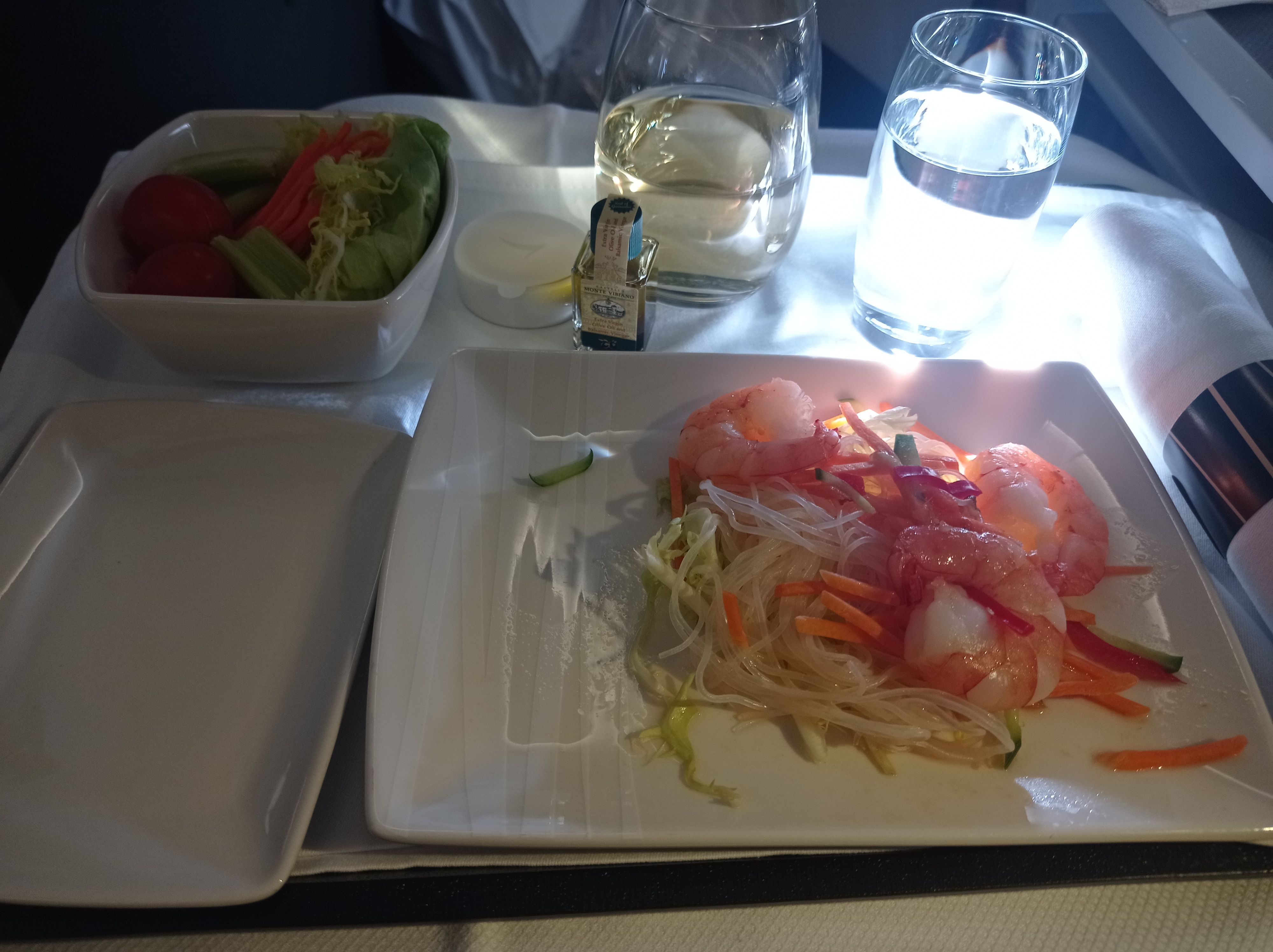



All Cathay business configurations still have entertainment systems and seat-back screens. This is something many others carriers no longer offer (I was disappointed to see on my next flight with Malaysia Airlines that this has now gone). The “bring your own screen” concept makes sense these days, but on a longer flight, I find it much better to have a fixed screen you can watch easily while eating or using a laptop.
Arrival into Kuala Lumpur
This was a relatively short flight, just under two and a half hours. After the meal service, there was just enough time for coffee and a bit of work. The crew remained attentive throughout the flight. Arrival and immigration into Kuala Lumpur was fast – with no need to show anything COVID-related. I was on the Airport Express train into the city just 20 minutes after landing.
Flying business class on short regional flights is a delight with Cathay Pacific, and many other airlines. Unlike in Europe, there is decent differentiated seating and full-service offering. Feel free to discuss your experiences flying business class with Cathay or other airlines in the region in the comments section.

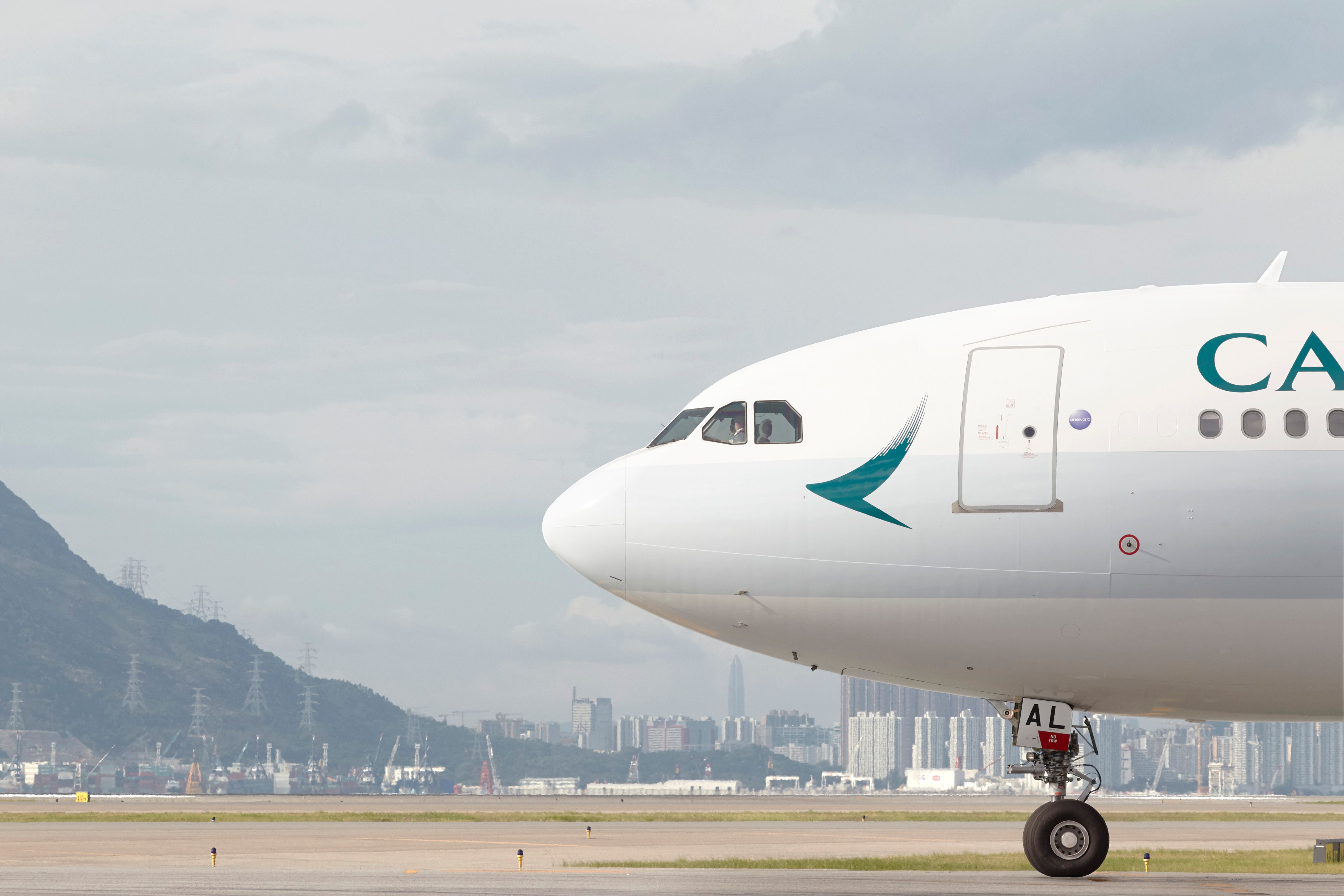

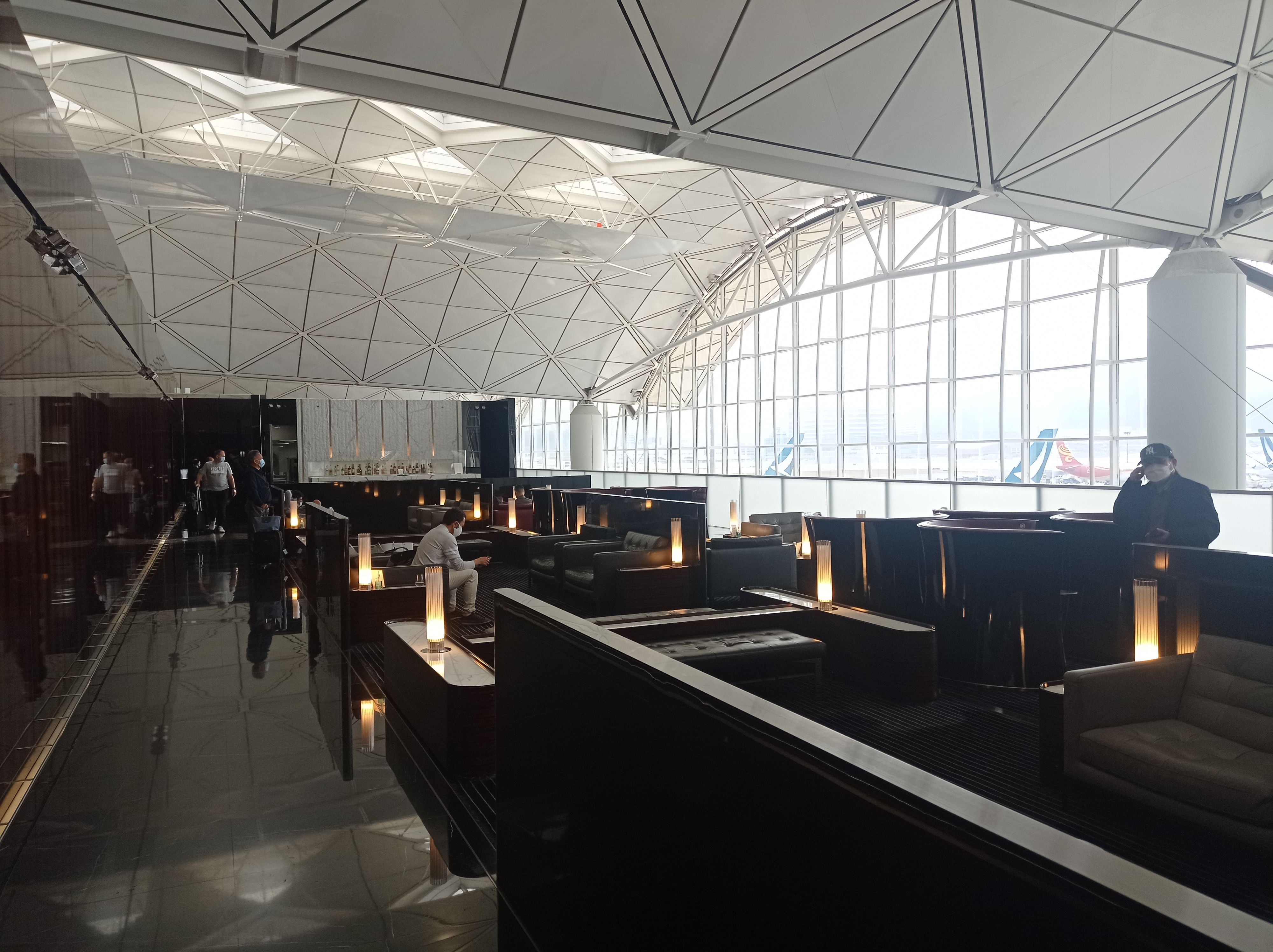


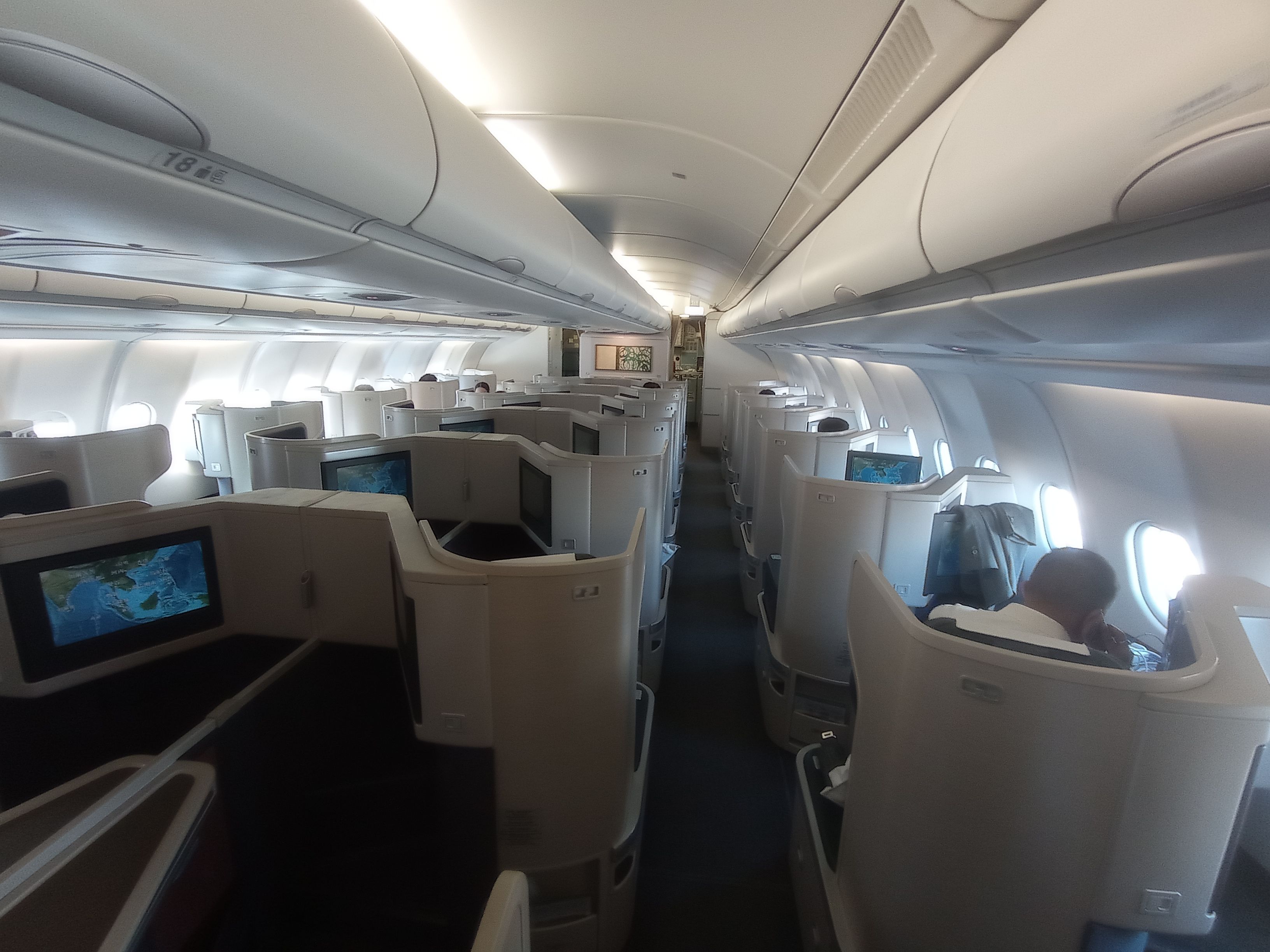

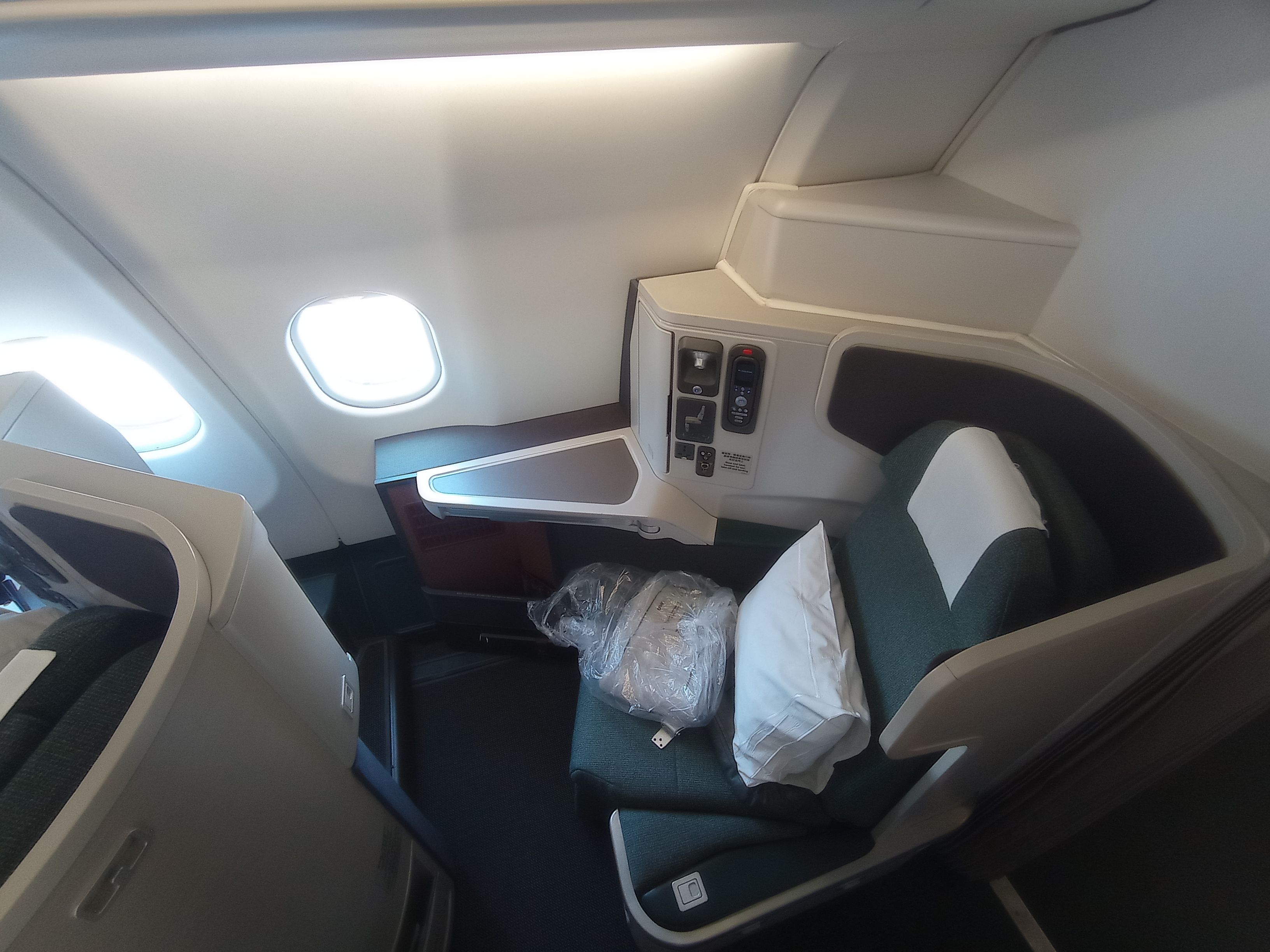
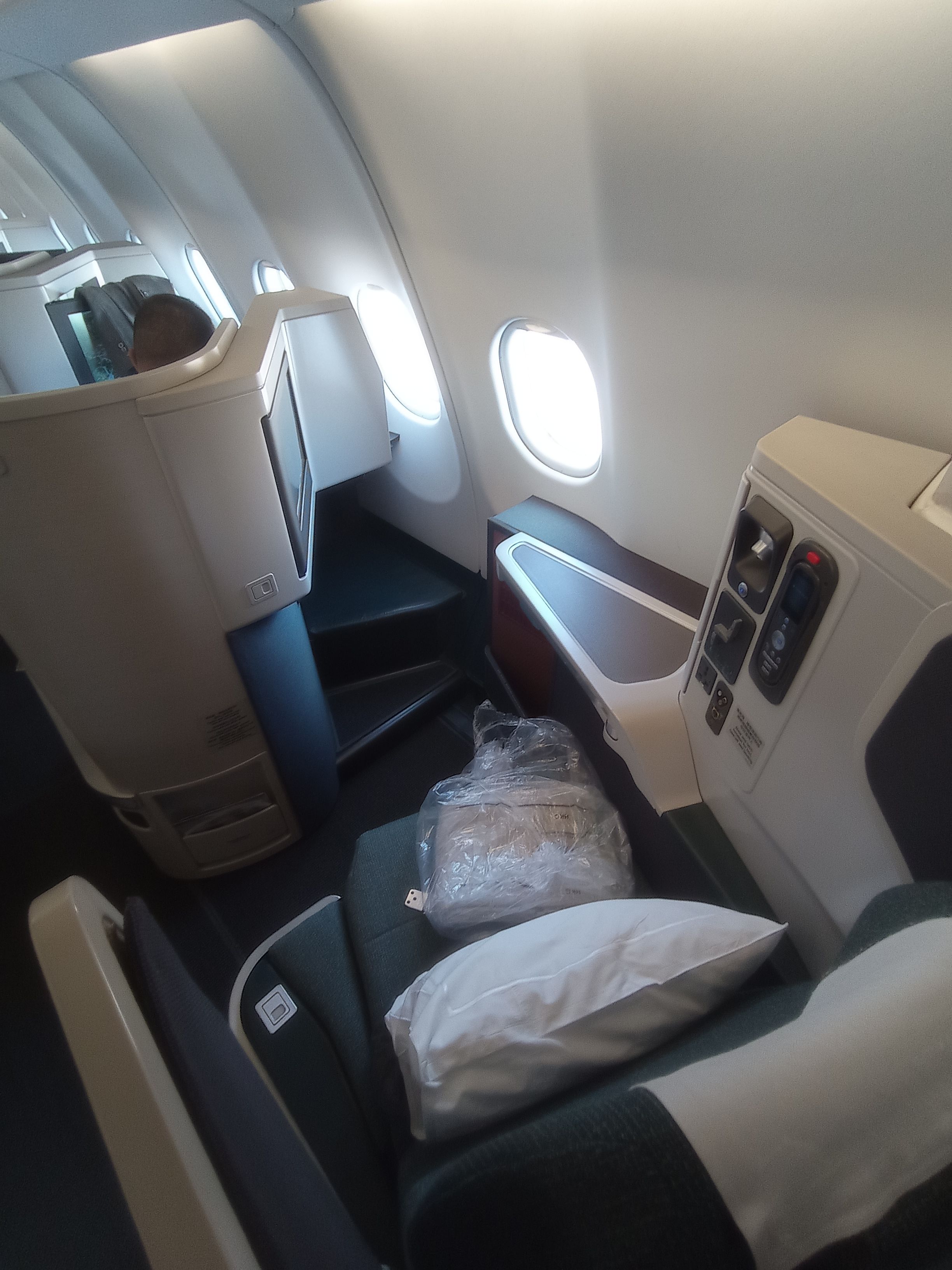


-B-KPM.jpg)